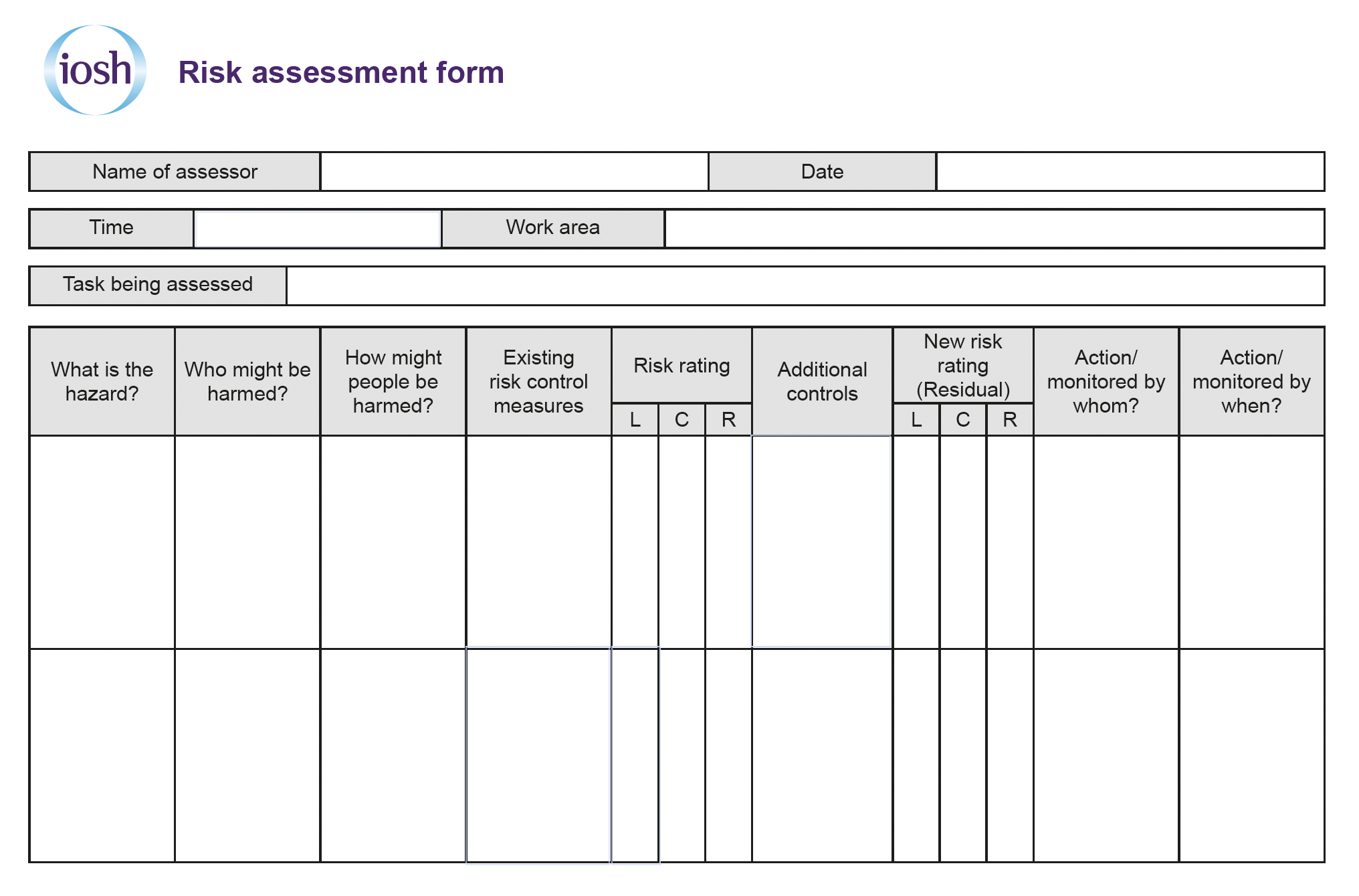Hi,
This week is the last week of our series on Health and Safety Risk Assessments and we’ll be covering the final 2 steps of the process – Documenting and Reviewing our Risk Assessments.
We’re covering 2 stages in one e-mail – a lot to get through – so I’ll just briefly mention that if you haven’t joined the waiting list for our new XenZone online training library, now is the time to do it. Just click on the big red button below and you can add your details to the list. That way you’ll know as soon as we launch so you can get registered for your free trial (did we mention that you get 7-days to try it out – completely free?)
Edit: The XenZone system is now live – so there’s no waiting list any more. Instead, click the Big Red Button to get your free trial
In case you missed it, here’s a short teaser video. Hopefully informative but also a bit of fun!
So, now for today’s topic – the final 2 stages of the of the 5-step Risk Assessment process.
Recording the risk assessment
Step four of our process requires us to record the results. And to do this, we need to use a risk assessment form. Remember, an organisation with more than 5 employees is legally required to write down their risk assessments, but even if you work for a smaller company it is advisable to do so anyway.
Different organisations use different types of form. And for the most part, all are acceptable. However, the IOSH form, an copy of which you can see below, is recommended because it forces you to use the five step process. You can download a copy here.

The first thing we record are any hazards and the people who might be affected. This is step one. For example, over the previous couple of weeks we have identified the stairs as a hazard, with all staff and visitors identified as being at risk.
We then consider the potential consequences should the risk be realized under any current controls we already have in place and calculate the level of risk using the risk formula or risk matrix that we have discussed previously. This is step two.
Next, we identify and record any new controls we can introduce to try and reduce the risk even further. This is where we use the risk control hierarchy from last week’s issue.
As discussed last week, once we have implemented the risk controls, we need to recalculate the risk. This is known as residual risk, and unless you can use elimination (the first step on the hierarchy) there will always likely be some level of residual risk. Documenting the risk controls and calculating the residual risk is step three.
Step four, then, is exactly what you are doing here – recording the results of your risk assessment. So filling in this form is in itself sufficient to complete step 4.
Finally we record who will be responsible for ensuring that the controls are implemented and by when. This is step five, which we will consider now.
Reviewing the risk assessment
Undertaking a risk assessment is a useful exercise to mitigate any risks that you have identified in your workplace. However it may not last forever. Therefore, Step 5 of the process is to regularly review the controls you have put in place to make sure they are working.
You should also review them if:
- they may no longer be effective
- there are changes in the workplace that could lead to new risks such as changes to:
- staff
- a process
- the substances or equipment used
Also consider a review if your workers have spotted any problems or there have been any accidents or near misses. It may also be that there have been changes or updates to the relevant legislation.
Once you have undertaken the review, you should update your risk assessment with any changes you make.
That’s all for this week, and that’s all for this series! Hopefully this has been useful for you. Remember that the content from this series was adapted from a course on our upcoming XenZone training platform, so if you’d like to explore the process further, or learn about a whole bunch of other FM topics, then XenZone might just be the place for you.
We’ll be back next week – with a brand new topic!
In the meantime, have a great week!
Chris and the Xenon Team
P.S. If you haven’t already studied or started studying for an IWFM qualification, which will cover topics like this in depth and fully assess your understanding, you may want to have a look at our guide to the IWFM Qualifications which will give you a full breakdown of how they work and what’s involved in the different levels. You can download it here.
P.P.S. If you’re already considering taking a qualification but don’t know which level to go for, a good starting point is our One-Minute-Leveller tool, which will ask you a few questions and give you a recommendation based on the result. You can access it here.
P.P.P.S. Don’t forget you can read all of the previous issues on our website. If you’re new to the mailing list or you want to revisit an earlier issue without digging through your inbox, you can find all of our past issues in the Vault.




